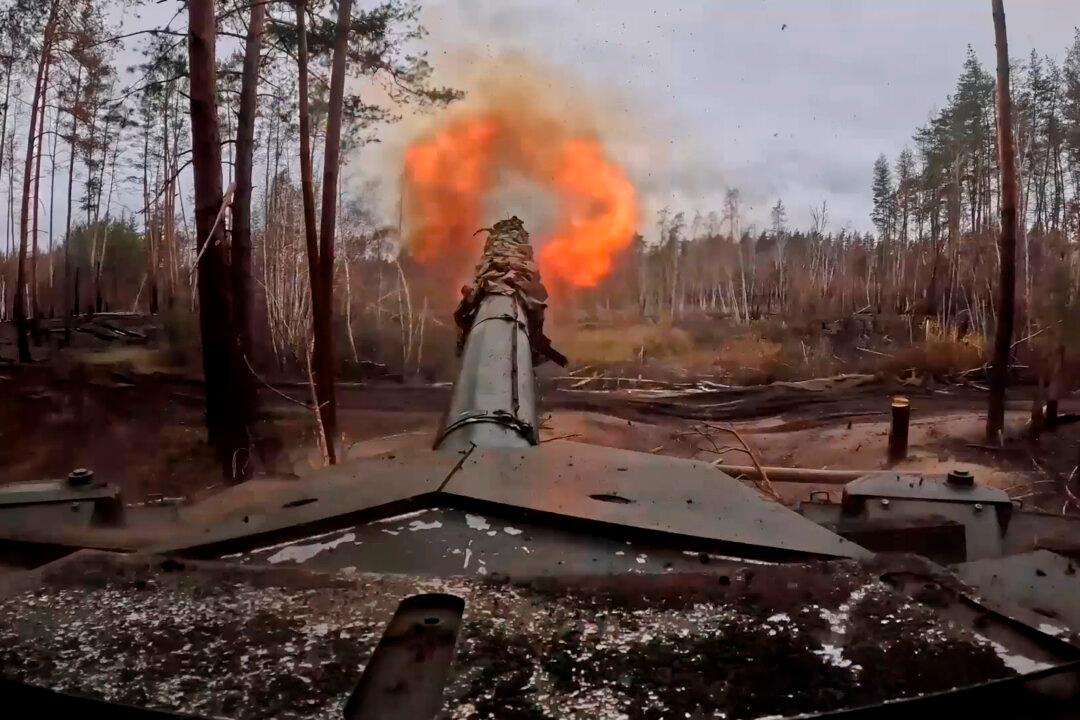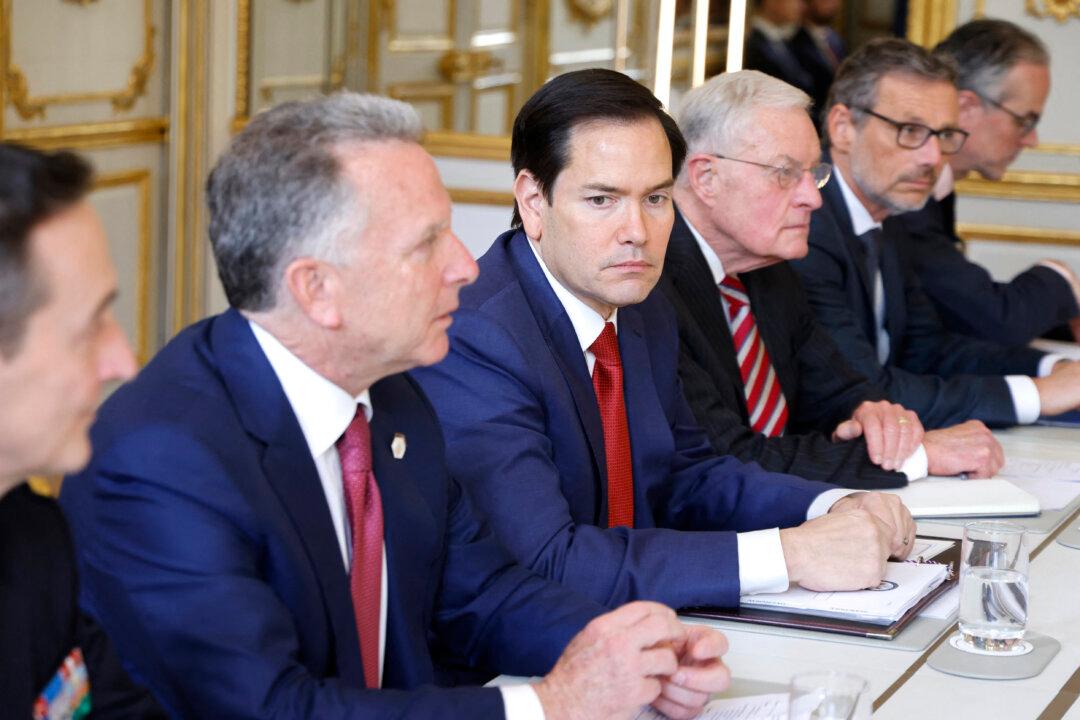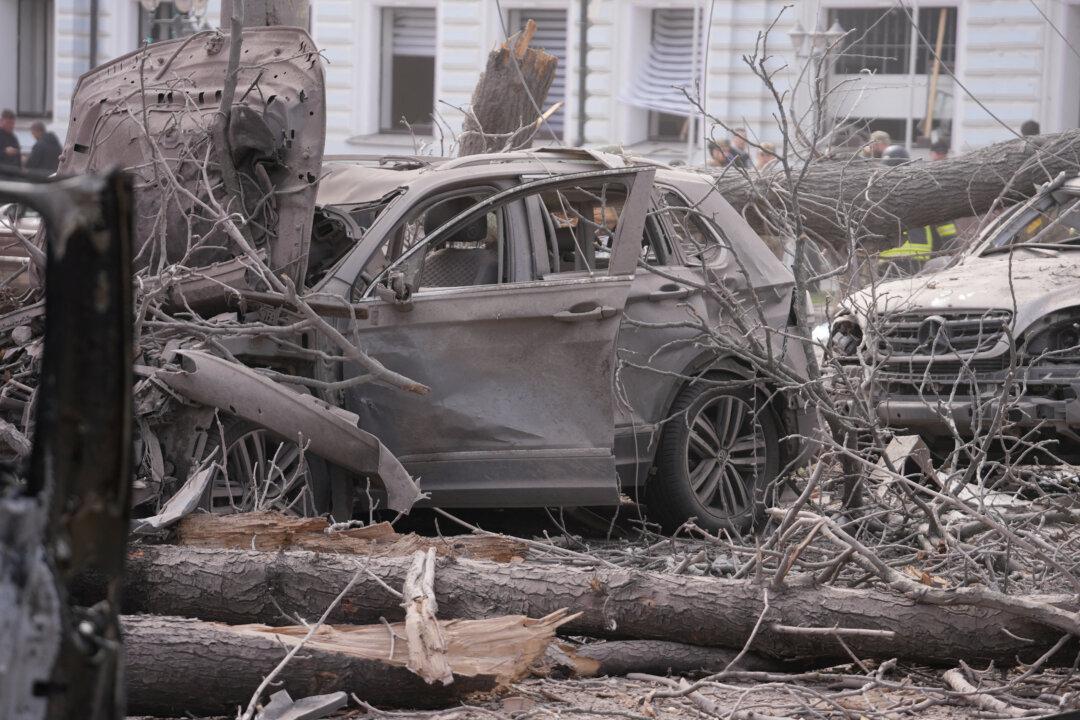In recent weeks, international attention has focused largely on Russia’s western Kursk region, where Ukrainian forces have struggled to hold on to territory in advance of anticipated cease-fire talks.
In the meantime, however, Russian forces have continued their steady advance through the eastern Donbas region capturing numerous towns and villages, as well as hundreds of square miles of territory.
Ambassador Matthew Bryza, a former White House and senior State Department official, said Russia has relaunched an offensive in Donbas and the conflict—now well into its third year—“is no longer a stalemate.”
“But Russia is not winning this war,” he told The Epoch Times.
His assertion contradicted statements by some Western politicians and pundits who have recently said that the war had ground to a “stalemate.”
As Russian troops move through Donetsk and Luhansk, which together comprise the Donbas region, even Kyiv’s staunchest supporters have acknowledged the precarious battlefield situation.
“The frontline in Donetsk … is becoming increasingly fluid,” the ISW, a think tank based in Washington, said in its assessment.
Since early September, the ISW added, Russian forces have “significantly increased the tempo of their advances,” capturing more than 425 square miles of territory.
According to the think tank, Russian forces in Donbas are now advancing “at a significantly quicker rate than they did in the entirety of 2023.”

Russian forces are now investing Toretsk, a Ukrainian stronghold in north-central Donetsk, after overrunning two nearby towns—Zalizne and Niu-York—in August.
In recent broadcast remarks, Anastasia Bobovnikova, a spokeswoman for Kyiv’s military, said that Russia was using a range of weaponry—including aircraft, drones, and artillery—to capture the town.
The current siege of Toretsk comes hard on the heels of several earlier Russian battlefield gains elsewhere in Donbas.
In early October, the town of Vuhledar southwest of Toretsk fell to Russian forces. Weeks later, the nearby town of Selydove met a similar fate.
Russian forces have also largely surrounded the town of Kurakhove, which sits to the south of Selydove, after reportedly taking two nearby villages last week.
They are also bearing down on the town of Pokrovsk, a key transit and procurement hub for Ukrainian forces.
Of vital strategic importance, Pokrovsk sits at the intersection of several supply routes linking it to other towns in the region, including Chasiv Yar and Kostiantynivka.
Russia’s gains on the eastern front have not been confined to Donbas. Russian forces also now stand at the gates of Kupiansk, the administrative capital of Ukraine’s northeastern Kharkiv region.
On Nov. 26, Russia’s defense ministry claimed that its forces had captured the village of Kopanki, which sits to the immediate south of Kupiansk.
The Epoch Times could not independently verify the ministry’s claims, which have not been confirmed by officials in Kyiv.
In 2022, Russia invaded—and effectively annexed—the Donetsk, Luhansk, Kherson, and Zaporizhzhia regions, all of which it now regards as Russian territory.
Kyiv has vowed to continue fighting the Russian invasion, with the support of its powerful Western backers, until all lost territories are recovered.

Negotiating Positions
Meanwhile, former President Donald Trump’s recent reelection to a second term in office has prompted a flurry of speculation that the war may soon draw to a close.In the run-up to the election, Trump repeatedly pledged to end the conflict, while providing relatively few details as to how he might do so.
“President Trump has indicated his commitment to pushing both sides to end the war,” said Bryza, who sits on the board of the Jamestown Foundation, a Washington-based think tank devoted to defense policy issues.
On Nov. 24, Rep. Mike Waltz (R-Fla.), Trump’s new national security adviser, said in an interview with Fox News that the conflict should be brought to a “responsible end.”
“What we need to be discussing is who’s at that table, whether it’s an agreement, an armistice, how to get both sides to the table, and then what’s the framework of a deal,” he said.
Responding to Waltz’s remarks, a Kremlin spokesman voiced Moscow’s willingness to enter talks with the aim of ending the conflict.
As articulated by Putin, Moscow’s terms for ending the conflict include the withdrawal of Ukrainian forces from all territories claimed by Russia, along with written guarantees that Ukraine will never join the NATO alliance.
Kyiv has so far rejected these terms, which Ukrainian President Volodymyr Zelenskyy recently described as “unacceptable for Ukraine and suicidal for Europe.”
Ukraine “cannot legally acknowledge any occupied territory … as Russian,” Zelenskyy said, while also voicing Kyiv’s readiness to “bring Crimea back diplomatically.”
“Such discussions in Western capitals [about a cease-fire] are related to the fact that the strategic initiative … fully belongs to the Russian army,” Naryshkin told Russia’s TASS news agency.
But according to Bryza, there is “zero chance” that Kyiv will relinquish territory—especially in the Kherson and Zaporizhzhia regions, large swathes of which remain outside Russian control.
“It’s Russia that will have to concede that Ukraine is not going to pull out of Zaprorizhzhia and Kherson,” he said.
“It’s likely that Russia will have to withdraw its troops from those regions,” Bryza added. “But it’s impossible to predict how talks will play out.”

Holding Kursk
In early August, Ukrainian forces staged a surprise offensive into Russia’s western Kursk region, where they wrested control over a sizeable strip of Russian territory.Since then, Russian troops backed by aircraft and artillery have succeeded in retaking some of the territory.
According to Ukrainian officials, Kyiv now hopes to use that captured territory as a bargaining chip in anticipated cease-fire talks.
“I am sure that he wants to push us out by Jan. 20,” he added, referring to the day on which Trump’s second term will begin.
Last week, Ukrainian forces began using Western-supplied advanced missile systems to strike targets in Russia—both in Kursk and the neighboring Bryansk region.
According to Bryza, this enhanced offensive capacity means that Russia “will have great difficulty in pushing Ukrainian forces from Kursk—although they may do so.”
He described Kyiv’s plan to use territory in Kursk as a bargaining tool as “entirely realistic,” while adding that both sides “will have to offer concessions.”
“The art of the deal is figuring out how to minimize what you must give up in order to maximize what you get from the other side,” Bryza said.







